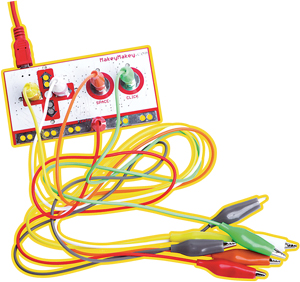This holiday season, as you roam the physical and digital aisles of stores, the number of STEM items has increased exponentially. Some toys are fads that have little learning value, but other toys are fun and educational and worth a closer look.
For children between the ages of three and ten, the Osmo Little Genius and Genius Starter Kits are fun technology additions to either an iPad or Amazon Fire tablet. The Little Genius kit includes four game apps. Apps, including Squiggle Magic (imagine being able to use sticks and rings to create animated pictures), and ABCs, which lets children form letters using the same sticks and rings while tracking mastery. The other two apps are good for story creation and character dress-up. The Genius Kit has five apps to support learning. The Numbers app helps with counting, and the Words app teaches letters, spelling, and vocabulary. The Newton app lets kids use real-world or drawn objects to solve puzzles. The objects appear on the screen and interact with digital objects as players race against a timer to complete puzzles.
 The Makey Makey (shown) is an electronic device that allows users to connect physical objects to computer programs. Younger children can create a fruit piano. (Most fruits and vegetables work, but bananas work extremely well.) Connect the Makey Makey to a computer, and go to makeymakey.com/piano. Attach each of the alligator clips to the Makey Makey and a piece of fruit. Connect the ground alligator clip to yourself or child. When the person attached to the ground (earth) touches a piece of fruit, a sound will play. Experiment with different conductive objects like play dough, graphite pencil on paper, and even foods like gummy worms.
The Makey Makey (shown) is an electronic device that allows users to connect physical objects to computer programs. Younger children can create a fruit piano. (Most fruits and vegetables work, but bananas work extremely well.) Connect the Makey Makey to a computer, and go to makeymakey.com/piano. Attach each of the alligator clips to the Makey Makey and a piece of fruit. Connect the ground alligator clip to yourself or child. When the person attached to the ground (earth) touches a piece of fruit, a sound will play. Experiment with different conductive objects like play dough, graphite pencil on paper, and even foods like gummy worms.
The Makey Makey also works with Scratch, a block-based programming language, so kids and adults can create custom programs. Imagine adding an interactive element to a map for a school project. When a location is clicked, a voice-over shares a relevant fact. If you need additional inputs, the flip side of the Makey Makey has inputs for letters and more, so all you need is more alligator clips. More advanced and adventurous kids might consider creating an escape room with Makey Makey, giving clues and checking answers.
The past several years, prices on 3D printers have dropped as the quality of the prints has increased. Quality, consumer printers are now available for less than $250. Most consumer 3D printers use fused filament fabrication to print, which means they melt a plastic filament and extrude it through a nozzle one layer at a time. When considering a 3D printer for the family, think about what you want to print to guide the decision on what print materials to use. PLA and ABS are common materials, and each has its strengths. The second feature to consider is the build area. Printers with larger build areas increase the cost, so consider a printer with a 6-inch square build area to balance cost and size. Additional features to consider are resolution and multiple-extruder models that can increase the price.
When it comes to the notion of owning a 3D printer or giving one as a gift, I have two concerns. The first is that 3D printers work by melting materials, so burning is a concern. Look for the 3D printers that come with a closed frame to protect the user from the hot print bed, hot print, and even hotter extruder. The closed frame also limits the fumes of materials like ABS from escaping. The second concern is related to learning. Printing 3D objects is fun and addictive, but downloading pre-fabricated objects from websites (like thingiverse.com) bypasses the design process. Therefore, I recommend signing up your child for a free account on tinkercad.com to design their own objects. (Pro tip: Missing a remote control back or random part? Search on thingiverse.com and print a replacement.)
When it comes to tech gifts, don’t feel pressured to buy the most expensive gift. Find gifts that engage your child and provide fun learning. And although I adore technology, I have to say the gift I enjoy most with my children is puzzles. We play music on a record player (my childhood Disney albums), and work until a certain portion of the puzzle is complete – or until our legs are numb.




